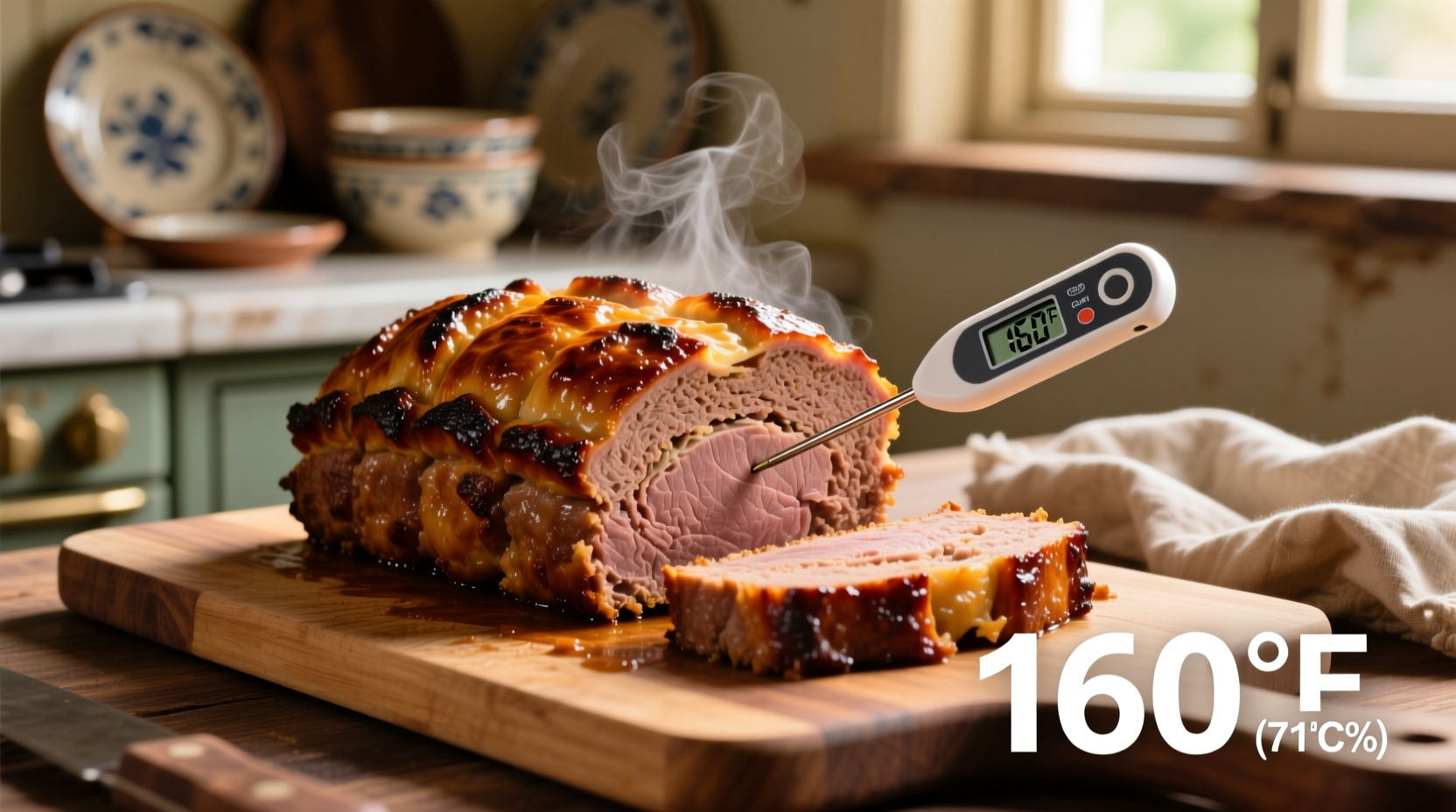Why Meatloaf Temperature Matters: Your Food Safety Guide
Getting the temperature right isn't just about perfect texture—it's critical for food safety. When you grind meat, any bacteria on the surface gets distributed throughout the entire mixture. Unlike whole cuts of meat where surface cooking kills pathogens, ground meats require thorough cooking to eliminate potential health risks.
According to the USDA Food Safety and Inspection Service, ground meats must reach a minimum internal temperature of 160°F (71°C) to destroy harmful bacteria like E. coli and Salmonella. This guideline applies to all ground beef, pork, veal, and lamb mixtures. For poultry-based meatloaves, the safe temperature increases to 165°F (74°C) due to different bacterial risks.
How to Accurately Measure Your Meatloaf's Temperature
Proper temperature measurement makes all the difference between a juicy masterpiece and a dry disappointment. Follow these professional techniques:
- Use the right thermometer: Digital instant-read thermometers provide the most accurate results for home cooks
- Insert correctly: Place the probe into the center of the thickest part, avoiding contact with the baking pan
- Check multiple spots: Meatloaf often cooks unevenly—verify temperature in several locations
- Wait for stabilization: Leave the thermometer in place for 10-15 seconds until the reading stops changing
| Meat Type | Safe Minimum Internal Temperature | Resting Time |
|---|---|---|
| Beef, Pork, Veal, Lamb (ground) | 160°F (71°C) | 3 minutes |
| Turkey, Chicken (ground) | 165°F (74°C) | 3 minutes |
| Beef, Pork, Veal, Lamb (whole cuts) | 145°F (63°C) | 3 minutes |
Avoiding Common Meatloaf Temperature Mistakes
Even experienced cooks make these temperature-related errors that compromise both safety and quality:
The Browning Illusion
Many home cooks mistakenly believe meatloaf is done when the exterior appears browned. Ground meat can appear cooked well before reaching safe temperatures—always verify with a thermometer. The USDA confirms that color alone isn't a reliable indicator of doneness.
Improper Thermometer Placement
Inserting your thermometer too close to the edge or touching the baking dish gives inaccurate readings. For precise measurement, insert at a slight angle into the geometric center of your meatloaf.
Perfect Meatloaf: Beyond Just Temperature
While temperature is critical, these additional factors ensure restaurant-quality results:
The Resting Period
Remove your meatloaf from the oven when it reaches 155-157°F (68-69°C). During the essential 3-5 minute resting period, carryover cooking will bring it to the perfect 160°F while allowing juices to redistribute. Cutting too soon causes precious moisture loss.
Texture and Visual Cues
At proper temperature, meatloaf should feel firm but spring back slightly when pressed. The juices should run clear, not pink. If using a glass pan, you'll notice reduced bubbling at the edges when fully cooked.
Special Considerations for Different Meatloaf Variations
Certain recipes require temperature adjustments:
Mixed Meat Blends
When combining meats (like beef and pork), cook to the highest required temperature—in this case, 160°F. For blends containing poultry, follow the 165°F guideline.
High-Altitude Cooking
At elevations above 3,000 feet, water boils at lower temperatures, potentially affecting cooking times. You may need to increase cooking time by 5-10% while still verifying with a thermometer. The USDA confirms that altitude doesn't change required internal temperatures, only cooking duration.
Troubleshooting Temperature Issues
Problem: Meatloaf appears done but registers below 160°F
Solution: Return to oven and check temperature every 2-3 minutes. The exterior may brown faster than the interior cooks.
Problem: Meatloaf exceeds 165°F and becomes dry
Solution: Next time, remove at 157°F and allow proper resting time. Consider adding moisture-rich ingredients like grated vegetables or broth to your recipe.
Essential Tools for Perfect Meatloaf Every Time
Invest in these temperature-critical tools:
- Digital instant-read thermometer (calibrated regularly)
- Loaf pan with drainage holes to prevent steaming
- Mixing bowl chilled before combining ingredients
- Meatloaf glaze applied during final 15-20 minutes of cooking
Frequently Asked Questions
Can I check meatloaf temperature through the top?
No, always insert the thermometer horizontally from the side to reach the center. Checking from the top often hits air pockets or cooler surface areas, giving inaccurate readings.
What if my meatloaf reaches 160°F but looks pink?
Some ingredients like tomatoes, peppers, or certain seasonings can cause a pink color even at safe temperatures. The USDA confirms that as long as your thermometer reads 160°F for red meat blends or 165°F for poultry, it's safe to eat regardless of color.
How long should meatloaf rest after reaching proper temperature?
Allow 3-5 minutes of resting time covered with foil. This crucial period lets the temperature stabilize and juices redistribute, preventing dryness when slicing.
Does oven temperature affect the required internal temperature?
No, the required internal temperature remains constant regardless of oven setting. However, lower oven temperatures (325°F) require longer cooking times but help prevent exterior overcooking before the center reaches 160°F.
Can I use a meat thermometer while meatloaf bakes?
Yes, oven-safe probe thermometers can remain in the meatloaf during cooking. Position the probe in the center before baking and monitor temperature progress without opening the oven door repeatedly.











 浙公网安备
33010002000092号
浙公网安备
33010002000092号 浙B2-20120091-4
浙B2-20120091-4